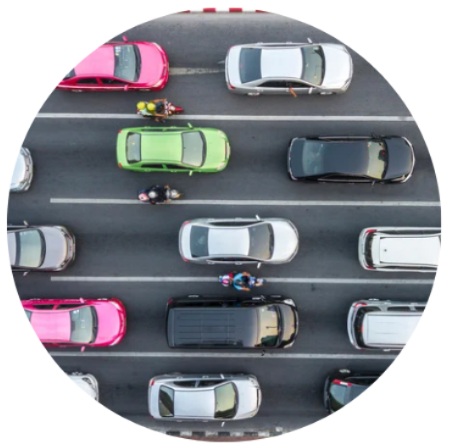Running Experience Survey 2025
6: Travelling to running events
How much time do people spend travelling to running events, and what forms of transport do they use to reach them?
These questions are significant not only in terms of participant experience, but also because they have a big impact on the environmental footprint of running events.
In this section we explore the findings of the RXS related to travel.

6.1 Travel time and forms of transport
Duration of travel
Most races take place relatively close to home, with almost a third of journeys under 30 minutes in length. 60% are no longer than an hour.
However, a significant proportion of races involve much longer trips. About 10% require travel of over four hours.
Transport used
Respondents were asked to identify their main means of transport for getting to a recent race. Unsurprisingly, ‘car or motorbike’ was by far the most common choice.
Perhaps more interestingly, almost as many respondents cited flying as their primary mode of transport as ran or walked.
6.2 Low carbon travel
Human-powered and public transport
This chart shows the percentage of respondents who used a human-powered form of transport such as running, walking or cycling (blue) or public transport (pink) for different travel durations.
Only races within about 30 minutes have a significant proportion of participants who arrive under their own steam, with an increasing number of runners opting for public transport for longer distances.
Overall though, these two categories combined only account for about 20% of all race participants.
6.3 Overnight stays
Hotel bookings by travel time
Runners who had to travel for longer periods to get to a race were more likely to book a hotel in the host region/city.
As this chart shows, races that involved trips of over one hour are increasingly likely to be associated with a hotel stay. For trips of two to four hours, more than half of runners stay overnight.
And for the longest journeys of four hours and over, the proportion rises to almost 80%.
Running Experience Survey
© Neil Baxter 2025
Please always cite using: Baxter, N. (2025). Running Experience Survey. Running Studies. https://runningstudies.co.uk/running-experience-survey